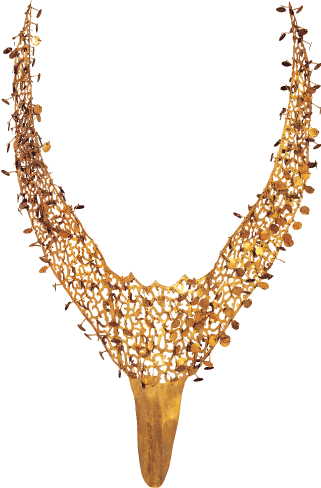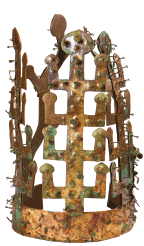 |
 |
 |

Eurasia is the world’s largest continent, occupying a third of
its overall land area and extending over East and West. The various
ethnic groups and cultures that expanded there competed for hegemony and
prospered and developed reciprocal relationships in ancient times.
Trade was especially essential in connecting East and West. These activities took place on what later came to be called the “Silk Road” and involved the exchange of rare goods such as East Asian silk, Central Asian horses, North Asian gold and fur, and Mediterranean and Central Asian glass. One of the oldest such trade routes was the Steppe Route, which centers on the North Asian steppe zone and connects the West, from the Black Sea coast to the Mediterranean, to the East, from northern to north-eastern China.
Trade was especially essential in connecting East and West. These activities took place on what later came to be called the “Silk Road” and involved the exchange of rare goods such as East Asian silk, Central Asian horses, North Asian gold and fur, and Mediterranean and Central Asian glass. One of the oldest such trade routes was the Steppe Route, which centers on the North Asian steppe zone and connects the West, from the Black Sea coast to the Mediterranean, to the East, from northern to north-eastern China.


Crown Ornament
Excavated from Geumgwan Tomb, Gyeongju, 5th century

Excavated from Geumgwan Tomb, Gyeongju, 5th century
Beautiful and unique crown ornaments, such as these, which were
influenced by the headdresses of the nomads from the Steppe, were
developed in Silla.
Since early times, horse-riding nomads actively
exchanged goods and information in the North Asian Steppe. East Asian
silk did not only come from China. From the Neolithic remains of the Goguryeo kingdom was discovered earthenware with silkworm and mulberry
leaf patterns and small carvings in rock of silkworms. The Record of
Byeonjin in The Chronicle of the Three Kingdoms tell us that
confederacies of Byeonhan and Jinhan, which correspond later to the
Silla and Gaya kingdoms, “had many mulberry trees and silkworms”,
indicating that the silk produced on the Korean Peninsula was known
in other countries from ancient times.
These people appeared to have accessed the western regions of China using the horse-riding nomads of the Steppe Route rather than crossing China. Resplendent artifacts have been discovered from their imperial tombs and ruins on the Korean Peninsula that cannot be seen from the same period in China.
These people appeared to have accessed the western regions of China using the horse-riding nomads of the Steppe Route rather than crossing China. Resplendent artifacts have been discovered from their imperial tombs and ruins on the Korean Peninsula that cannot be seen from the same period in China.
Gilt Bronze Crown
Reportedly Kyungbuk,
6th century
Crowns with ornaments in the shape of trees with stacked w’s and deer
horns were discovered in Silla. These designs, however, are reminiscent
of the golden crowns with trees and deer ornaments of the western
nomadic Sarmatians.

Jeweled Sword
Excavated from Gyerim Road, Gyeongju, 6th century

Extravagant burial accessories such as these were discovered in even
small Silla tombs. Records of excavated examples and wall paintings
suggest that these objects came from western Turkistan or Central Asia.